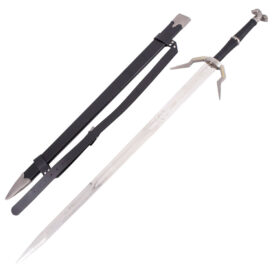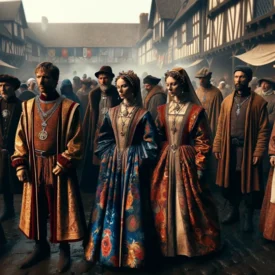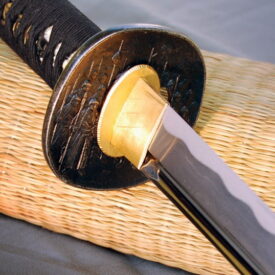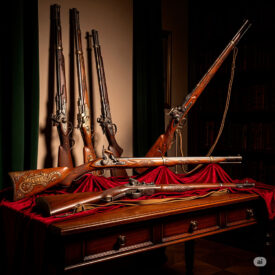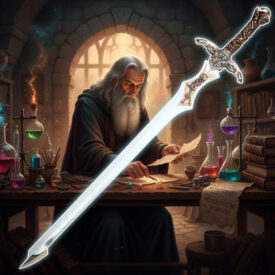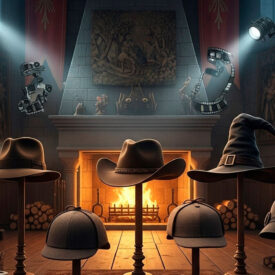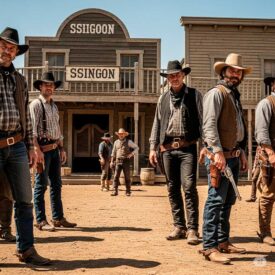The Wild West, a fascinating era of American history, is etched in our imagination thanks to countless films and television series. When we think of this period, it’s almost impossible not to picture a cowboy or outlaw with his inseparable Winchester rifle. This image, cemented by Hollywood and iconic actors like John Wayne or Clint Eastwood, has turned the Winchester into a true American cultural symbol. Colloquially, it is known as “the gun that won the West” due to its predominant role in the hands of settlers. But how much truth is there in this legend, and what is the real story behind this mythical rifle? Next, we’ll separate fact from fiction to understand its importance, innovations, and true spread.
Origins of the Lever-Action Rifle: Beyond Winchester
Although the name “Winchester” is almost synonymous with lever-action rifles, the idea didn’t originate directly from this company. The concept of a repeating rifle with lever action and tubular magazine was an evolution of several bright minds of the 19th century.
The First Steps: From Walter Hunt to Smith & Wesson
It all began in 1848, when New York inventor Walter Hunt patented his “Repeating Rifle.” This design featured a tubular magazine and operated using a complex system of two levers. It fired what he called the “rocket ball,” an early form of caseless ammunition where the gunpowder was contained in the hollow base of the bullet. Although Hunt’s design was fragile and impractical, it laid the foundation for the future.
In 1849, Lewis Jennings bought Hunt’s patents and developed an improved version, manufactured in small quantities until 1852. Later, Horace Smith and Daniel B. Wesson (who would later found the legendary Smith & Wesson) acquired the Jennings patent. Smith made several improvements, and in 1855, with several investors, they created the Volcanic Repeating Arms Company. The largest shareholder of this company was a successful clothing manufacturer named Oliver Winchester.

The Volcanic company had limited success. Wesson and Smith left the company to found the Smith & Wesson Revolver Company. Volcanic went bankrupt, and it was Oliver Winchester who bought the assets and reorganized the company as the New Haven Arms Company in April 1857.
Benjamin Henry and the “Damned Yankee Rifle”
Within the new company, the brilliant designer Benjamin Tyler Henry continued working to improve the concept. His greatest achievement was redesigning both the rifle and the cartridge. He created the powerful .44 Henry rimfire cartridge and designed a robust and reliable rifle to fire it: the Henry rifle of 1860. Retaining only the general form of the breech mechanism and tubular magazine, a revolutionary weapon was born.
The Henry rifle was used by some Union soldiers during the American Civil War, where it demonstrated its overwhelming superiority against muzzle-loading rifles. Its capacity to fire 16 times without reloading led Confederate soldiers to nickname it in frustration: “that damned Yankee rifle you load on Sunday and shoot all week!”.

The Birth of an Icon: The Winchester Repeating Arms Company
After the war, Oliver Winchester renamed the company to Winchester Repeating Arms Company. The firm modified and improved the basic Henry rifle design, giving rise to the first rifle that officially bore the Winchester name: the Model 1866.
The Model 1866: The First Winchester
Known as the “Yellow Boy” for its distinctive bronze alloy receiver, the Model 1866 improved upon the Henry’s design by adding a loading gate on the side of the frame, an innovation by Nelson King. This allowed the tubular magazine to be reloaded much more quickly and easily than the Henry rifle. It still used the reliable .44 Henry cartridge.
The Legendary Winchester Model 1873: The True Conqueror of the West
The real legend was born seven years later. In 1873, Winchester introduced the Model 1873, with a stronger steel frame and chambered for a new, more powerful centerfire cartridge: the .44-40 Winchester. This rifle quickly earned the nickname “the gun that won the West,” and its fame skyrocketed thanks to the movie industry, which even dedicated a film to it, “Winchester ’73” starring James Stewart.
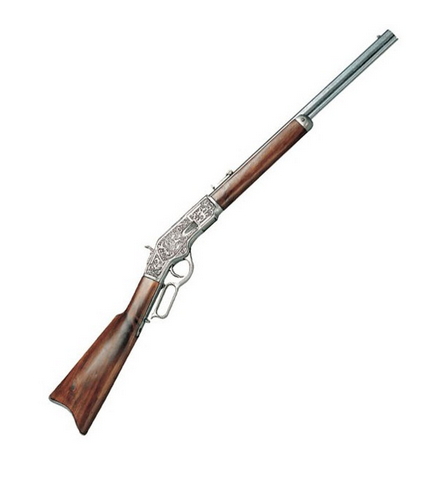
Its great success was due in part to its ammunition being interchangeable with the most famous revolver of the time, the Colt Single Action Army “Peacemaker.” This logistical unification was an invaluable advantage on the frontier. Figures like Buffalo Bill and Theodore Roosevelt were well-known users, and its production exceeded 720,000 units.
Later Innovations: The Models 1876 and 1894
Winchester didn’t stop there. To compete with the powerful single-shot rifles, it launched the Model 1876 (or “Centennial Model”), a scaled-up version of the 1873 for more powerful cartridges. Later, collaboration with firearm genius John Moses Browning led to a series of iconic rifles. The most famous is, undoubtedly, the Model 1894. This rifle introduced the .30-30 Winchester caliber, the first smokeless powder cartridge for big game hunting in America, and became the best-selling sporting rifle in history.
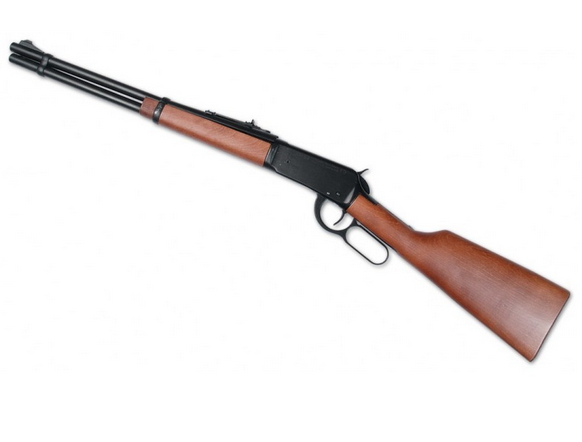
Hollywood vs. Reality: How Common Was the Winchester Rifle?
Although movies have led us to believe that the Winchester was the universal gun of the West, reality was more complex. In the 1870s, a Winchester rifle cost about 40 dollars, equivalent to a month’s salary for an unskilled worker. Its high price meant not everyone could afford it. Many settlers and lawmen relied on cheaper weapons, like surplus Civil War muskets or large bore shotguns, which were very effective at short range.
Therefore, although the Winchester was a cutting-edge weapon and a status symbol, it wasn’t as omnipresent as Hollywood suggests. Seeing someone with a Winchester in a period photograph often indicated that the owner was in good financial standing.
Anatomy of the Legend: How Does a Winchester Lever-Action Rifle Work?
The heart of a Winchester rifle is its lever-action system. Its operation is manual and simple: a lever beneath the receiver is pulled down, unlocking and moving the bolt rearward, extracting the spent cartridge case and cocking the hammer. Raising the lever again lifts a new cartridge from the tubular magazine and pushes it into the chamber, leaving the rifle ready for the next shot.
Advantages of Lever-Action
- Operating speed: Allows for fast successive shots, being quicker than a bolt-action rifle.
- Reliability and lightness: These are robust weapons, with proven mechanisms and moderate weight.
- Maneuverability and compact design: Their flat profile makes them ideal for carrying, especially on horseback, and for movement through dense vegetation.
- Nostalgic style: They evoke the mythical era of the Old West, possessing immense historical and cultural value.
Disadvantages and Limitations
- Pressure limitations: Classic designs are not suitable for very high-pressure modern cartridges.
- Optical sight mounting: The top ejection of cases in many classic models makes it difficult or impossible to mount a scope over the receiver.
- Precision for competition: Although excellent for medium-range hunting, they usually don’t have the extreme accuracy of bolt-action rifles for long-range shooting.
- Cleaning difficulty: Their disassembly for deep cleaning can be more complex than other systems.

The Winchester Legacy in Popular Culture and Today
The Winchester is more than a firearm; it’s an element of cowboy identity, reinforced by film and television. Besides movies, its name has been used for the main characters of the popular series Supernatural, Sam and Dean Winchester. Today, its legacy endures. Modern models continue to be manufactured and are used in shooting competitions such as “Cowboy Action Shooting” and in various hunting disciplines. The Winchester rifle is a symbol of adventure, challenge, and transformation that continues to fascinate generations.
The charm of these historic guns is still alive. Both for collectors and for history or recreational shooting enthusiasts, owning a replica of a Winchester is like holding a piece of the West’s legend in your hands. You can explore a wide variety of models that capture the essence and design of these iconic pieces. Discover the model that excites you most and relive history.

